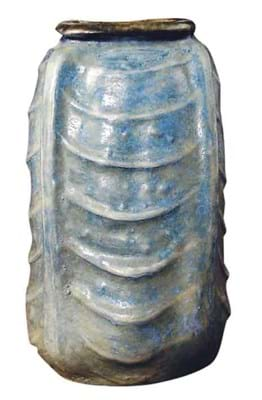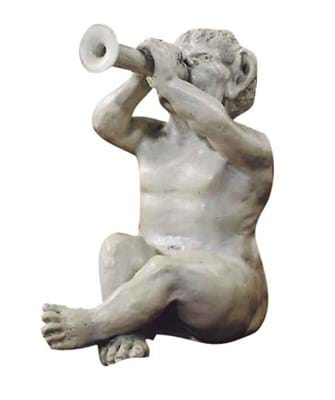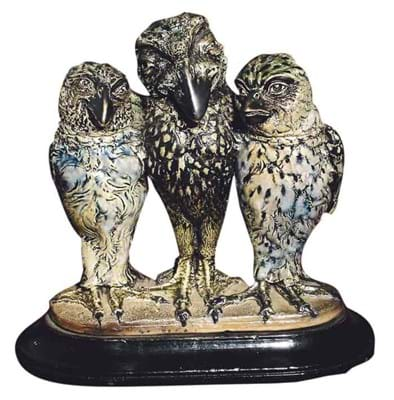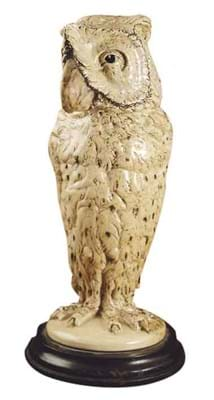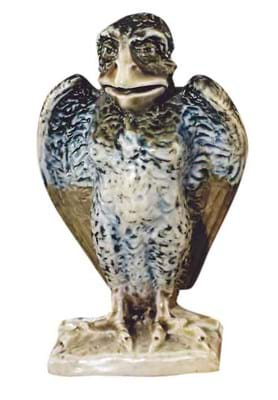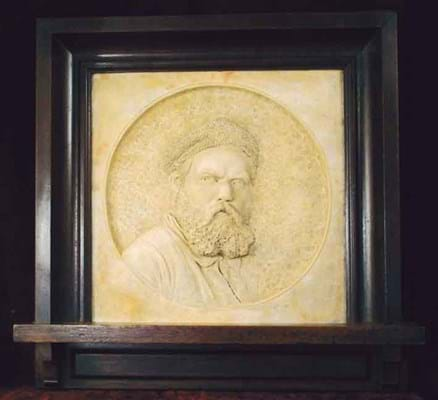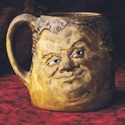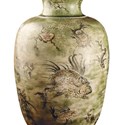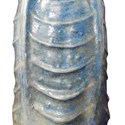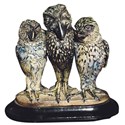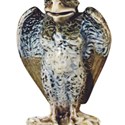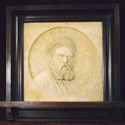Michael Jeffery was hoping that day would arrive on October 31, 2005.
It is a full 12 months since the decorative arts specialist at Woolley & Wallis first put the feelers out in the collecting community with his proposal for a single-subject sale dedicated to the quirky wares of the four Martin brothers.
A year later he had 25-30 different vendors, 74 lots, a small two-cabinet exhibition, a lecture from pioneering Martinware dealer Richard Dennis and the attention of many of the world's most serious collectors.
In order to hold the sale of art pottery grotesques on Halloween, he was even prepared to risk the wrath of his family - it was the day of his daughter's second birthday.
This was a sale that told the story of Robert W., Charles D., Walter F. and Edwin B. Martin. It included terracotta portrait plaques of two of the protagonists, a cross-section of the studio output from the 1880s to the onset of the First World War and a selection of associated ephemera including examples from the famous series of photographs taken c.1910 of the men, their birds and their beards in the workplace.
However, the success or otherwise of the sale would always be determined by the performance of the bird jars - and there were nine of them in total.
The early bird catches the worm. Subject to most competition was a characterful jar and cover from the early 1880s standing 12in (30cm) high - a squat little chap with large webbed claws and a bulbous beak casting a sly sideways glance.
These pioneering birds by Robert Wallace Martin (the earliest dates from 1880) are distinctive for heads and necks that fit together in only one position. Later birds have a simpler junction that allows the head to rotate. This bird was last seen at auction in 2001 when it had sold at $16,000 as part of the Harriman Judd Collection at Sotheby's New York. Here, it went to an Australian collector at £26,000 against an estimate of £15,000-20,000.
A triple bird group was one of the few pieces in the offing when the idea of The Martin Brothers Sale,as it was called, was first mooted.
Dated 1.10.1914 - some six weeks after the onset of the First World War - it is one of their last productions.
Standing 7.75in (19.5cm) high on its ebonised wood base, this rare Southall production had been priced at $26,000 as part of the commercial exhibition titled The Martin Brothers conducted by New York dealership Gallery 532 (David Rago and Phillip Chasen) in the autumn of 1995. A decade later, an overseas buyer bought it in Salisbury at its low estimate of £40,000.
Avian flu variant H5N1? On the strength of this outing - where all of the nine jars were sold at substantial numbers - it looks like a scare story. But, while there are many who covet these trophies of Victorian art pottery, they have become prohibitively expensive.
Mr Jeffery estimates that there are perhaps up to 20 collectors worldwide for whom owning a Martinware bird is both a desirable and financially feasible pursuit. In Salisbury that translated into three or four telephone lines and not a great deal of competition above some muscular estimates.
Mid-range material
There is much more action at more affordable price levels. The increasing focus upon the less iconic but equally evocative grotesques that currently occupy the mid-price ranges ensured competitive bidding for four face jugs and a collection of six musical imps from a single vendor.
The characterful, white-glazed imps made by Robert Wallace Martin in 1906 sold at between £2000 (a clarinettist carrying some damage) and £5000 (a seated cornet player show here). The buyer of a harp-playing imp at £4200 was also the seller of a large pair of vases by Robert Wallace Martin, incised with large scaly grotesque fish, jellyfish and sea creatures. These sold at £10,000 - an interesting case of a collector changing direction.
The largest of the face jugs, dated 1911, measured 8.5in (22cm) high and was modelled with two smiling faces.
At Christie's South Kensington in 1995 it made £2600. Here it took an above-estimate £8500.
Tellingly, the lower end of the price range (from £300 to £3000) was covered before the sale by what were frequently competitive commission bids.
Perhaps more significant than a £40,000 bird are the many pieces in this sale pitched in the lower hundreds that were creeping towards four figures once the hammer fell. This included a group of gourd vases, mostly by Edwin and Walter Martin, which brought between £500 and £1100 apiece. "It was not", said Mr Jeffries, "all about the birds". So will Martin Brothers in Salisbury become an annual fixture?
Given the difficulties in finding such a volume of privately-entered material, Mr Jeffery has no concrete plans to repeat the exercise. "Somehow, I don't think this is another Clarice," he said.



